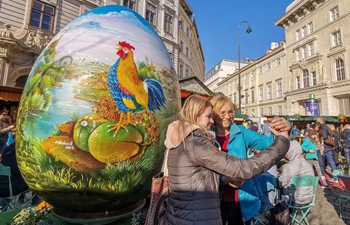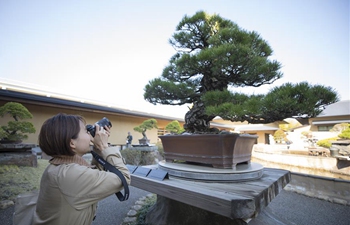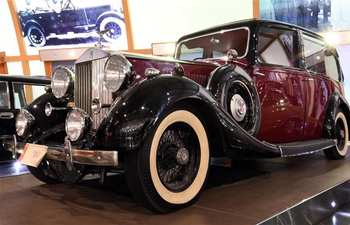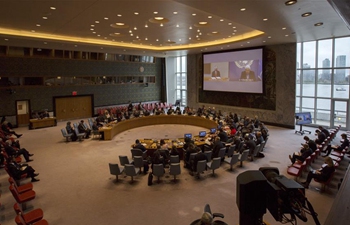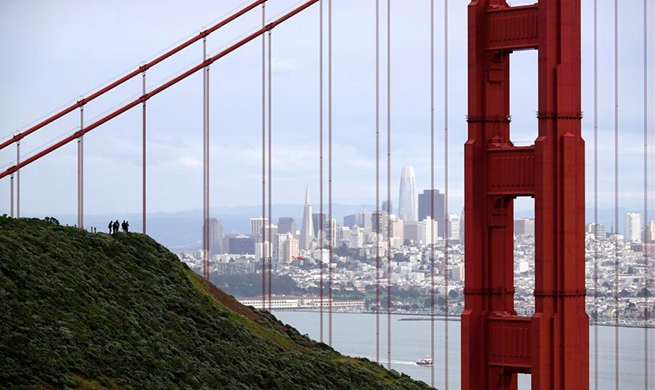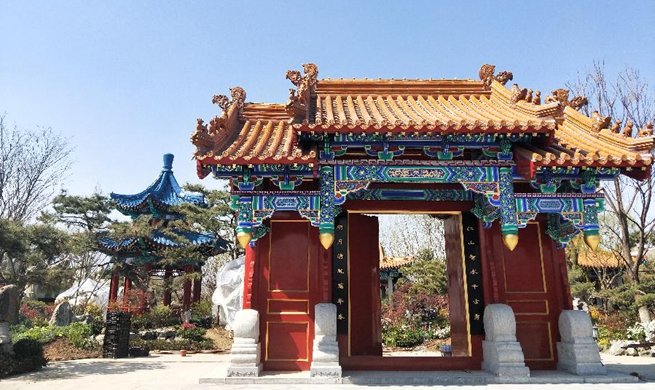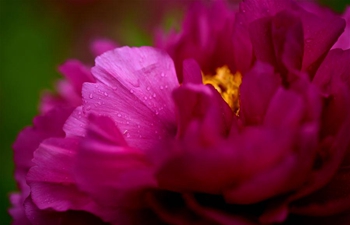WARSAW, April 16 (Xinhua) -- Poland is preparing to mark the 76th anniversary of the outbreak of the Warsaw Ghetto Uprising, the biggest Jewish military revolt during the Second World War.
In a much publicised educational campaign, the POLIN Museum of the History of Polish Jews has recruited volunteers to hand out thousands of paper daffodil badges on April 19.
Kajetan Prochyra, the music curator at the museum, explained that the daffodil has become a visible symbol of the uprising.
"It is worn by TV news presenters on all major networks. We invite artists, public figures and sportsmen to join and become the ambassadors of the campaign," Prochyra told Xinhua in an interview.
This year, the daffodils are being worn by pop-singer Monika Brodka, actress and social activist Ewa Blaszczyk, volleyball world champion Bartosz Kurek, among others.
"At the heart of the campaign are the volunteers: people of different ages who take a day off from work or school to donate their time and effort to spread the word about our Polish-Jewish history," said the curator.
The Warsaw Ghetto Uprising was a resistance by Polish Jews under Nazi occupation to the deportations from the Polish capital to the Treblinka extermination camp. The revolt began on April 19, 1943, and was crushed four weeks later.
"This was the battlefield of the biggest Jewish military action and first urban uprising during the Second World War," Prochyra explained.
"It is obvious for us that we have to remember about the heroes and the victims of the uprising. But it's important to emphasise that the heroism of the Jews was not only demonstrated during the uprising. Each day in the ghetto was a struggle: to survive, to provide food for your family, to treasure your human dignity," Prochyra noted.
Nowadays, not much remains of the old Jewish quarter. After the Uprising, the area was bulldozed by the Nazis.
"The district was completely destroyed. There's almost not a trace neither of the ghetto, nor the pre-war Northern District," Prochyra said. "That's another reason why the call of our campaign is so important: 'Laczy nas pamiec' - which means we have to 'remember together'".
In addition to the daffodil campaign, a special concert featuring American-born Chinese piano prodigy Lauren Zhang will mark the anniversary, by playing music often performed by musicians in the ghetto.
"From 1941 to 1942 there was a Jewish Symphonic Orchestra - an ensemble created by Jewish musicians in the ghetto, many of whom, before the war, were leading players of the Warsaw Philharmonic, Polish Radio Orchestra and the National Opera," Prochyra noted.
The Museum of the History of Polish Jews faces the Warsaw Ghetto Heroes Monument designed by Nathan Rapaport in the middle of the pre-war Northern District, where many Jewish citizens used to live and work. Nowadays the place has blossomed into a vibrant multicultural part of the city.
Just prior to the Second World War, Warsaw was home to 350,000 Jews. Today, only around 2,000 are estimated to be living in the city.
This year also marks the 100th birth anniversary of Marek Edelman - the last leader of the Uprising. Edelman survived the uprising, and after the war became a famed cardio-surgeon and a social activist.
